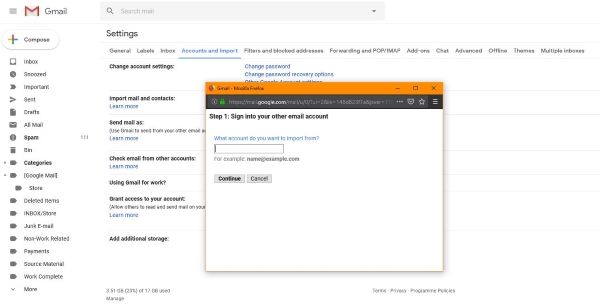Older readers remember a time when Hotmail, Microsoft’s free e-mail offering that dominated the messaging marketplace for a decade at the turn of the century. The Hotmail name is long gone; Microsoft folded the Hotmail brand into the Outlook product family in 2013 and focused all its marketing and development efforts on Outlook. However, the market penetration of Hotmail was such that for tens of millions of email users, it is and always will be Hotmail rather than Outlook. In this article, I’ll use them interchangeably, as I show you how to migrate your existing messages from Hotmail to Gmail and how to forward new messages as well.
How to Switch From Hotmail to Gmail
Gmail has taken the e-mail crown away from Microsoft’s offering. with more than 1.5 billion steady users compared to Microsoft’s relatively puny 400 million users. However, both systems are broadly similar in terms of their functionality and have similar levels of security, features, and ease of use. However, many people simply prefer the look and feel of Gmail to Hotmail. Fortunately, it’s very simple to switch from one to the other – and you can even keep your old account running in case you change your mind.
You can automate email forwarding so emails are automatically sent from Hotmail to Gmail before you migrate for good.
Forward all emails from Hotmail to Gmail
The first step in the migration process is to set up e-mail forwarding so that your incoming e-mail from Outlook gets automatically sent to your Gmail account. This is a straightforward process that requests the Outlook email server to make a copy of all the mail you receive and forward those copies to your Gmail address. It’s free, simple to set up, and can run indefinitely until you stop it.
- Log into your Hotmail account through your browser.
- Select the Settings icon (the cogwheel in the upper-right-hand corner) and scroll down to and select View All Outlook Settings.
- Select the Mail tab, then Forwarding.
- Select Enable Forwarding and enter your Gmail address.
- Check the box next to Keep a copy of forwarded messages so that your Hotmail account will continue to have all your mail.
- Close the Settings dialog.
From now on, all emails you receive through Hotmail/Outlook will have a copy forwarded to your Gmail account.

Migrate from Hotmail to Gmail
The next step, once you are ready to make the jump permanently, is to migrate all your existing emails from Hotmail to Gmail. It’s a straightforward process that will import all your folders and emails from Hotmail/Outlook into Gmail. First, do some housekeeping on your Hotmail account to delete all the spam and junk. You might want to go through all your email folders and get rid of the things that you know you don’t need. (You can save a little time on this task by checking out this TechJunkie article on how to automatically delete Hotmail junk mail.)
To actually migrate the information over:
- Open Gmail and select the cog icon to access Settings.
- Select the Accounts and Import tab.
- Select Import Mail and Contacts.
- Add your Hotmail account into the popup box and follow the wizard.
The wizard walks you through setting up the account import and what to include and what not to include. It’s a few steps but will have your Hotmail imported into Gmail within an hour or so depending on how busy the servers are.
Send and receive Hotmail from Gmail
If you don’t want to make the leap and leave Hotmail behind for good, you can actually send Hotmail emails from your Gmail account. It’s a neat feature that has been around for a while and can be used with most email accounts. It means you can read, send and receive Hotmail from Gmail and you only have to log into one email to see all of them.
- Open Gmail and select the cog icon to access Settings.
- Select the Accounts and Import tab.
- Select Check Email from Other Accounts and then click Add a Mail Account.
- Add your Hotmail address details and password. Enter the server details if prompted, they will be pop3.live.com as the POP server, 995 as the Port, and Always use SSL when retrieving email.
- Check the box next to Leave a copy of retrieved email on the server.
- Select Add Account.
- Select Yes I want to be able to send mail as… and Next Step.
- Enter the send from address and Next Step.
- Select Send Verification to send a one-time code from Gmail to Hotmail.
- Log into Hotmail, get the code, and add it to the box. Select Verify.
Now the two accounts are linked you can send emails using your Hotmail address by opening a new email and selecting the From address using the dropdown menu. Any recipient will see your Hotmail address in the From section even though it was sent using Gmail. It uses Hotmail as a relay to make life just a little easier.
While this tutorial covers forwarding emails from Hotmail to Gmail. You can import most email addresses into Gmail using the same process. Most common freemail and ISP-provided email will work, you may just have to import specific email server settings into Gmail for it all to run smoothly. There are a lot of other tips and tricks you can learn about Gmail – check out this Kindle book on Gmail tips, tricks, and tools.
Have you switched from Hotmail to Gmail? Followed this process to forward all your emails from Hotmail to Gmail? Tell us how it went if you have!
Disclaimer: Some pages on this site may include an affiliate link. This does not effect our editorial in any way.










